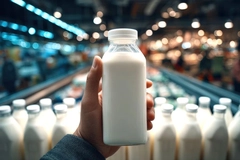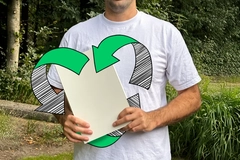Fashion packagers balance brand engagement with footprint reduction as consumer demands rise

17 Jul 2024 --- Packaging used for selling fashion items plays a crucial role in product protection, brand identity and the customer experience. We look at how industry players are bridging the gap between digital and physical touch points.
Smurfit Kappa provides packaging options for businesses selling goods on TikTok. During the COVID-19 pandemic, TikTok started offering brands the ability to sell via its increasingly powerful platform, and more businesses are expected to utilize the platform for selling clothing, homewares and food.
Suzy Gedney, Smurfit Kappa’s UK marketing manager, tells Packaging Insights that fashion brands are leveraging TikTok Shop (an e-commerce feature) to sell clothes by integrating their stores directly within the app. “This allows users to discover, browse and purchase products seamlessly through engaging video content, influencer collaborations and live shopping events.”
Fit-for-purpose packs
One of the main challenges with selling online is finding fit-for-purpose packaging. Smurfit Kappa says that packaging has to be resilient enough to withstand delivery and be brand-worthy.
The packaging giant says that this combination boasts benefits such as enhancing customer experiences and boosting brand awareness, as it increases the likelihood that customers will post pictures and positive content on their social media.
One of the main challenges with selling online is finding fit-for-purpose packaging (Image credit: Smurfit Kappa). “Social media users, in particular, are all about experiences, and packaging is a surefire way to deliver a positive one. Here at Smurfit Kappa, we design flexible, easy-to-pack and sustainable packaging,” says the company.
“This ensures packaging is strong enough for transit after undergoing rigorous testing processes and stands out visually — giving customers a social media share-worthy unboxing experience.”
What makes effective fashion packs?
TikTok’s algorithm promotes relevant content to potential buyers, enhancing visibility and driving sales.
“Many brands effectively use TikTok Shop to connect with a trend-conscious audience, showcasing products in a dynamic and interactive way, which is important as 87% of people now use social platforms when making a shopping decision, with 55% of smartphone shoppers purchasing a product after seeing it on social media,” says Gedney.
Effective packaging safeguards items during transit and offers eco-friendly solutions that resonate with today’s environmentally-conscious consumers.
“After all, 94% of consumers say it’s a brand’s responsibility to create products that are not harmful to the earth, with 61% believing they shouldn’t have to think about sustainability while shopping,” according to Gedney.
“By prioritizing planet-friendly and aesthetically pleasing packaging, fashion brands can elevate their image, foster customer loyalty and make a lasting impression.”
Bioplastics, compostability and reuse
In March, a survey of board directors and senior executives of fashion brands and retailers in the UK, US and Australia revealed that most (83%) implemented new forms of environmentally sustainable packaging.
When asked about sustainable materials used to date, two-thirds indicate they have been using bioplastics — plastic materials produced from renewable biomass sources such as starch, oils, wood chips and sawdust. Dryrobe balances eco-friendly packaging and an unboxing experience for its customers (Image credit: Smurfit Kappa).
Dryrobe balances eco-friendly packaging and an unboxing experience for its customers (Image credit: Smurfit Kappa).
Over half (57%) said that they are using paperboard, 52% cited multi-material combinations such as paper and plastic, and 48% said they were using new polymers with comparable properties as plastic but less environmentally harmful.
Relatedly, Sway, a start-up specializing in regenerative alternatives to plastic packaging, developed a Thermoplastic Seaweed resin, a home-compostable material made from seaweed and plants. The California-based company said its technology allows seaweed to replace flexible plastics for fashion packaging on a large scale for the first time.
Sustainable fashion packaging is essential as it reduces environmental impact and aligns with the growing consumer demand for eco-friendly practices, asserts Gedney.
“Today’s consumers, especially younger, environmentally-conscious shoppers, prioritize brands that demonstrate a commitment to the planet,” she says.
“By using recyclable, biodegradable or reusable materials, fashion brands can enhance their reputation, foster customer loyalty and contribute to a healthier planet. Planet-friendly packaging not only protects products but also reflects a brand’s values, making it a critical component in the purchasing decisions of many consumers.”
Gedney highlights the weather-proof clothing brand Dryrobe as an example, as the company was able to “strike the perfect balance” between eco-friendly packaging and a “delightful” unboxing experience for their customers.
“It is important for brands to leverage the growth in demand for omnichannel customer experiences and ensure the customer journey is seamless from browsing to receiving. Unboxing videos have grown to over 25 billion in recent years, with 62% of unboxing video viewers detailing that they use these as a way to inform their buying decision.”
By Natalie Schwertheim











